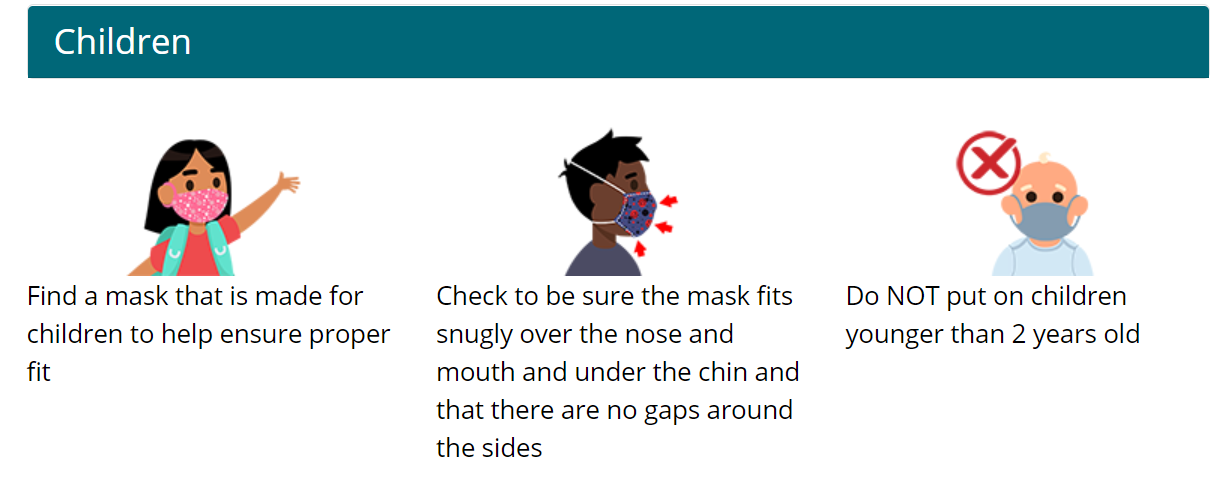More Stories
The Centers for Disease Control and Prevention has released information of what parents should consider if their children’s schools are requiring or encouraging the use of masks.
Below are some things you should consider if your child has to wear a cloth face covering in school:
1. Consider asking what steps your school will take to minimize the potential for students to be singled out or teased for wearing or not wearing a mask.
STATE OF OUR SCHOOLS: Back-to-school resources
2. Appropriate and consistent use of face coverings may be challenging for some children. Wearing cloth face coverings should be a priority when it is difficult for students to stay 6 feet apart from each other (e.g., during carpool drop off or pick up, when entering the building or standing in line at school, or while on the bus).
3. If your child is small, find a mask that is made for children to help insure proper fit. Check to be sure the mask fits snugly over the nose and mouth and under the chin and that there are no gaps around the sides. Cloth face coverings should not be worn by children younger than 2 years old, anyone who has trouble breathing, or anyone who is unconscious, incapacitated, or otherwise unable to remove the cloth face covering without assistance.

COVID RESOURCES: COVID-19 vaccine resources and case data
4. Have multiple cloth face coverings, so you can wash them daily and have back-ups ready. Choose cloth face coverings that fit snugly, but comfortably against the side of the face, completely cover the nose and mouth, are secured with ties or ear loops, include multiple layers of fabric, allow for breathing without restriction, and can be washed and machine dried without damage or change to shape.
MORE: 7 recommendations to keeping your COVID-19 cloth masks clean
5. Label your child’s cloth face coverings clearly in a permanent marker so that they are not confused with those of other children.
Another way for your child to not lose their mask - clip the mask to a breakaway lanyard to keep it from getting misplaced. See the video below:
MORE: 7 recommendations to keeping your COVID-19 cloth masks clean
5. Label your child’s cloth face coverings clearly in a permanent marker so that they are not confused with those of other children.
Another way for your child to not lose their mask - clip the mask to a breakaway lanyard to keep it from getting misplaced. See the video below:
6. Practice with your child putting on and taking off cloth face coverings without touching the cloth.
7. Explain the importance of wearing a cloth face covering and how it protects other people from getting sick.
8. Consider talking to your child about other people who may not be able to wear cloth face coverings for medical reasons (e.g., asthma).
Trying to pick the best face covering for your child? Click here here for a guide of 4 masks.
9. As a family, model wearing cloth face coverings, especially when you are in situations where physical distancing is difficult to maintain or impossible.
10. If you have a young child, help build their comfort wearing a cloth face covering and become comfortable seeing others in face covers.
Click here for more American Academy of Pediatrics tips on how to get young children used to wearing masks.
11. Consider providing your child with a container (e.g., labeled resealable bag) to bring to school to store their cloth face coverings when not wearing it (e.g., when eating).
Source: Centers for Disease Control and Prevention
9. As a family, model wearing cloth face coverings, especially when you are in situations where physical distancing is difficult to maintain or impossible.
10. If you have a young child, help build their comfort wearing a cloth face covering and become comfortable seeing others in face covers.
Click here for more American Academy of Pediatrics tips on how to get young children used to wearing masks.
11. Consider providing your child with a container (e.g., labeled resealable bag) to bring to school to store their cloth face coverings when not wearing it (e.g., when eating).
Source: Centers for Disease Control and Prevention
More from News 12
0:19

New Jersey to bring cursive handwriting back for elementary grades
1:48

Rock thrown at school bus seriously injures Paramus student
1:41

New Jersey is the latest state to ban cellphones during the school day in grades K-12
1:46

Task force created to take on chronic absenteeism in New Jersey schools
1:49

Gov. Murphy expected to sign bill banning cell phone usage in NJ schools
0:19
